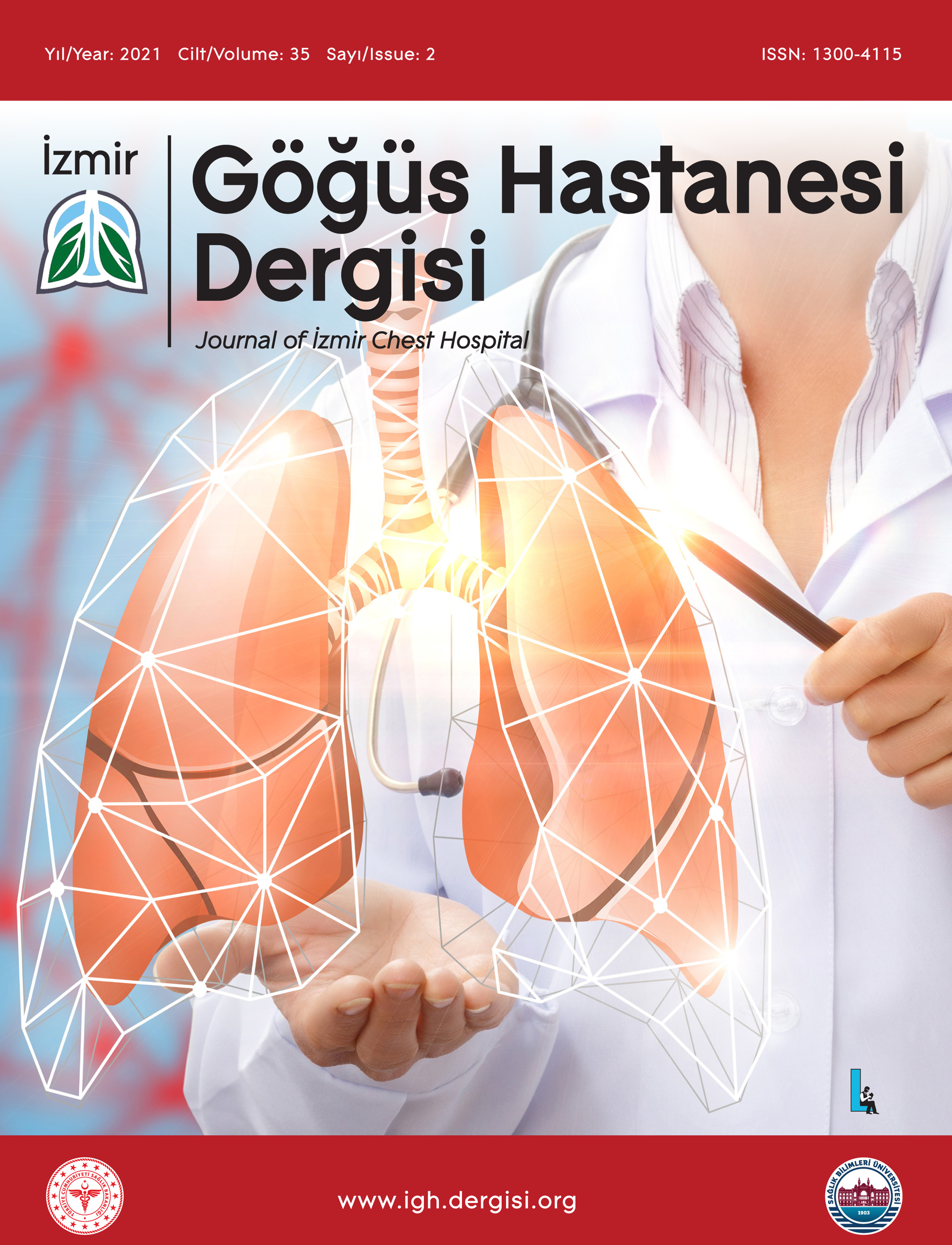SERT METAL MARUZİYETİ OLMAYAN DEV HÜCRELİ İNTERSTİSYELPNÖMONİ OLGUSU
Erkan AKAR1, Taşkın Erkin ÜRESİN2, Fatin Tolga CENGİZ31Şevket Yılmaz Eğitim ve Araştırma Hastanesi, Göğüs Cerrahisi Kliniği, Bursa, Türkiye2Ali Osman Sönmez Onkoloji Hastanesi, Patoloji Kliniği, Bursa, Türkiye
3Şevket Yılmaz Eğitim ve Araştırma Hastanesi, Patoloji Kliniği, Bursa, Türkiye
Dev hücreli interstisyel pnömoni, genellikle sert metallere maruziyetin neden olduğu bir pulmoner fibroz formudur. Olguların çoğu kobalt, tungsten gibi sert metallere maruziyet sonrası görülür. Bununla birlikte, sert metal maruziyetinin dev hücreli interstisyel pnömoniye yol açtığı kesin mekanizma bilinmemektedir. Elli yaşında, ofis çalışanı erkek hastada yaklaşık üç aydan beri başlayan göğüs ağrısı, kuru öksürük, nefes darlığı, şikâyetleri mevcuttu. Mesleki sert metal maruziyetinin olmadığı hastada, 30 paket/yıl sigara içme öyküsü vardı. Toraks bilgisayarlı tomografisin de, orta lobda hipodens lezyon görülmesi üzerine bronkoskopi yapıldı. Endobronşial lezyon görülmeyen hastaya PET-CT çektirilerek mediastinoskopi ve sonrasında torakotomi yapıldı. Açık akciğer biyopsisinde dev hücreli interstisiyel pnömoni tanısı konuldu. Steroid tedavisi alan olgu, klinik, radyolojik ve literatür bilgileri altında tartışılmıştır.
Anahtar Kelimeler: Sert metal maruziyeti, akciğer, dev hücreli interstisyelpnömoniHARD METAL EXPOSURENONGIANT CELL INTERSTITIAL PNEUMONIA CASE
Erkan AKAR1, Taşkın Erkin ÜRESİN2, Fatin Tolga CENGİZ31Şevket Yılmaz Eğitim ve Araştırma Hastanesi, Göğüs Cerrahisi Kliniği, Bursa, Türkiye2Ali Osman Sönmez Onkoloji Hastanesi, Patoloji Kliniği, Bursa, Türkiye
3Şevket Yılmaz Eğitim ve Araştırma Hastanesi, Patoloji Kliniği, Bursa, Türkiye
Giant cell interstitial pneumonia, caused by exposure to hard metals usually is a form of pulmonary fibrosis. Most of the cases are seen after exposure to hard metals such as cobalt and tungsten. Nonetheless the certain mechanism of intersitital pneumonia caused by hard metals is not known. Fifty years old office worker male, presented with chest pain, dry cough, shortness of breath since three months. He had a smoking history of 30 packs/year and did not have any hard metal exposure. Bronchoscopy was performed after the demonstration of a hypodense lesion on thorax computed tomography. There was not any endobronchial lesion. Pozitron emission tomography was done followed by mediastinoscopy and thoracotomy. The patient was diagnosed as giant cell interstitial pneumonia with an open lung biopsy. The patient receiving steroid treatment is discussed with clinical, radiological findings under the light of the literature.
Keywords: Hard metal exposure, lung, giantcellinterstitialpneumoniaMakale Dili: Türkçe






